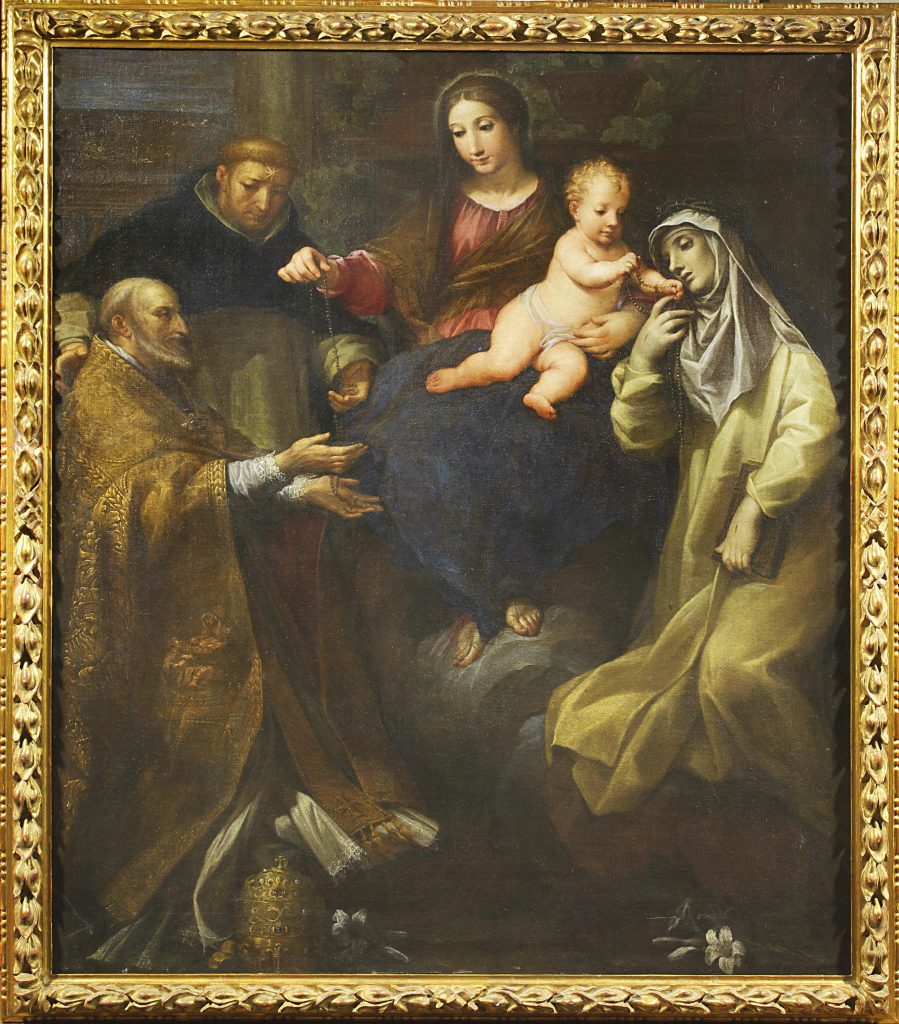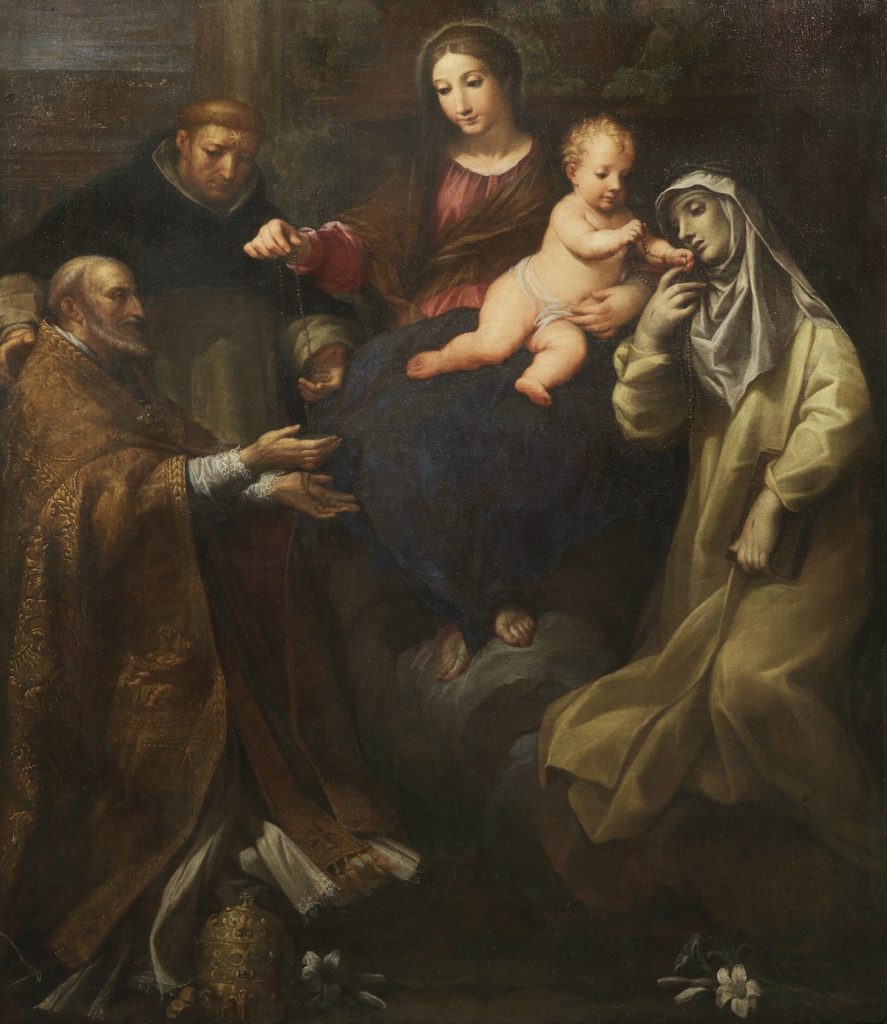LAZZARO BALDI
Pistoia, 1623 – Rome, 1703
Madonna with Child and Saint Dominic offering the Rosary to Saint Pius V and Saint Catherine of Siena
oil on canvas, cm 167×142
inscription on reverse “Lazzaro Baldi pinxit”
The group composed of the Madonna and Child is at the centre of this canvas. With Saint Dominic acting as a go-between, the Virgin offers the rosary to a kneeling pope with a tiara at his side. This is Saint Pius V, who can be recognised thanks to his characteristic profile and the view of the naval battle scene glimpsed through the window, alluding to the Battle of Lepanto. The Ghisleri pope (1504–1572), who led the Christian armies against the Turks, dedicated his success to the Madonna of Victory, thence called the Madonna of the Rosary. A rosary is also offered to Saint Catherine, the Sienese mystic, depicted with her head crowned with thorns, the stigmata and lilies.
It is unmistakably a painting of the Cortonesque school, inspired by the art of Pietro da Cortona. The theatrical style proposed by the latter, starting with the great ceiling of Palazzo Barberini painted in around 1630, quickly became the most widespread artistic trend in the peninsula, meeting with extensive appreciation and attracting numerous followers.
They must certainly have included Lazzaro Baldi from Pistoia, who came to Rome at a young age to study with Cortona and then stayed in the Eternal City, where he had a very successful career, producing several important works, such as the three frescoes in the Alexander VII gallery in the Quirinal Palace (1657), and the ‘Vision of Saint John on Patmos’, painted between 1660 and 1665. The artist’s works that come closest to our canvas, whose authorship is suggested by an old inscription on the back, probably not contemporary with the painting, include the ‘Mystical Marriage of Saint Rose of Lima’, Amsterdam, Rijksmuseum (SK-A -596). The theme of the Battle of Lepanto was given new impetus with the escalation of tensions with the Turks, in the years leading up to their final defeat in Vienna in 1683, and the painting can be traced back to this period.


